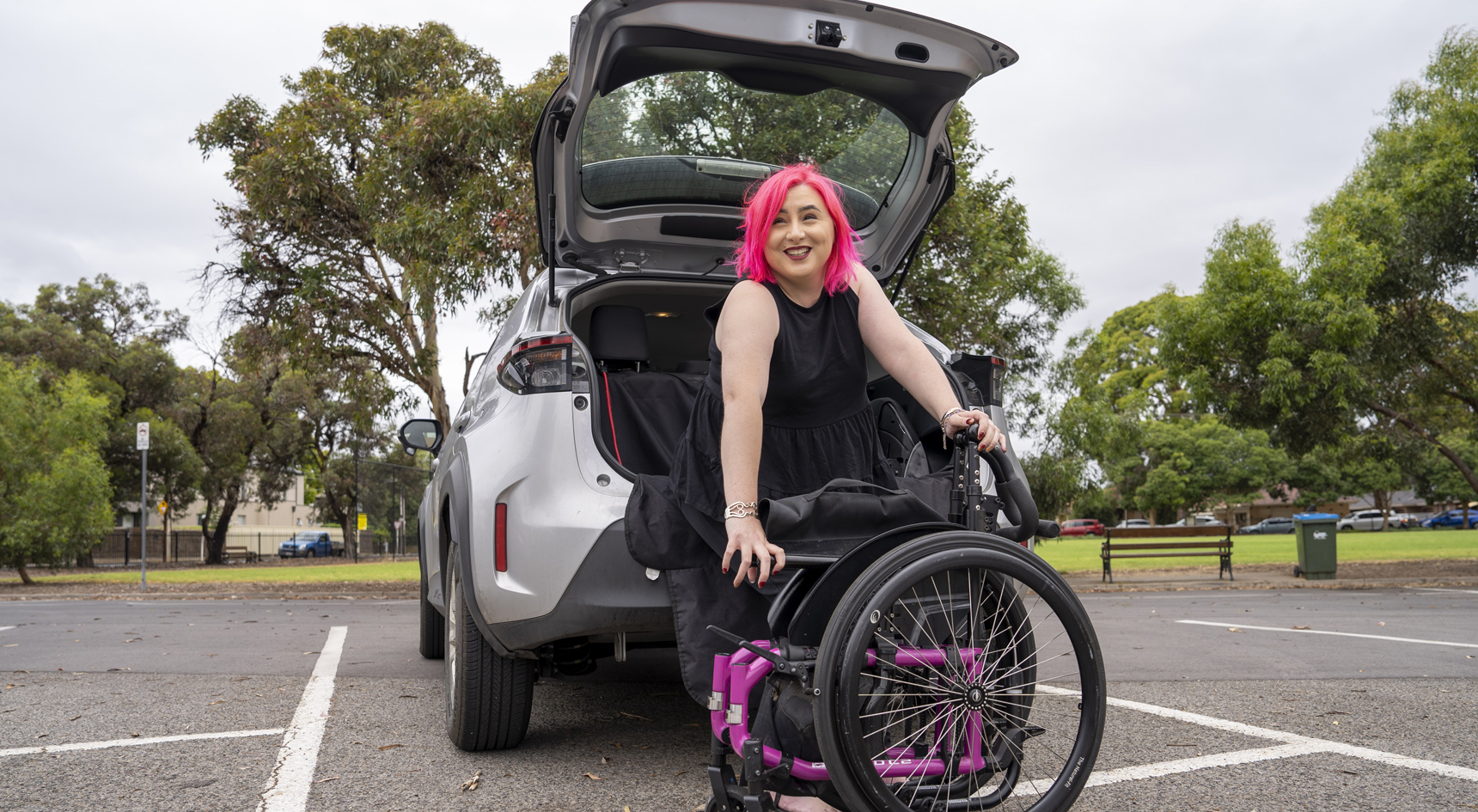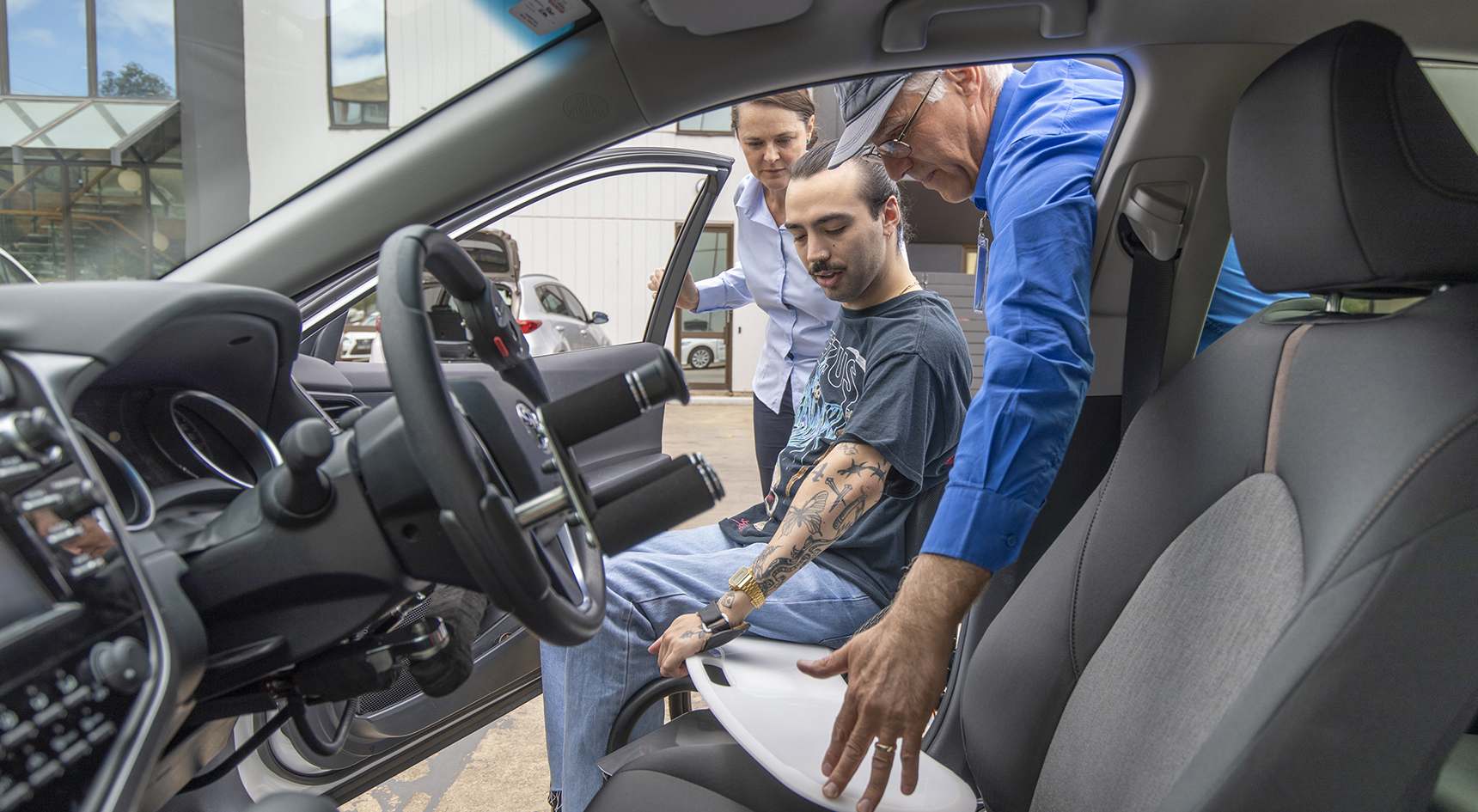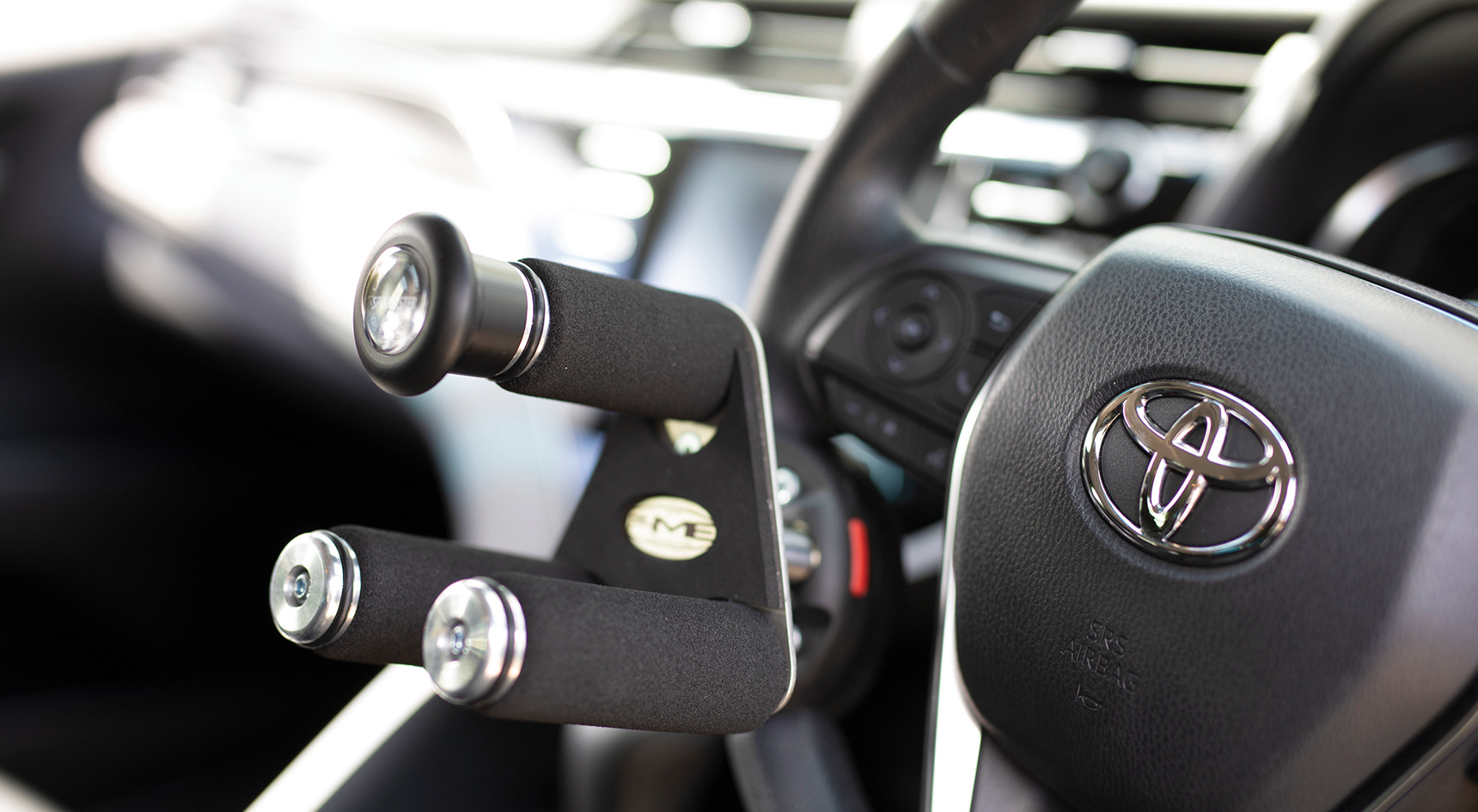Driving for independence

Many Australians who are living with a disability or have limited mobility can drive with modifications to their vehicle.
This provides them with independence and freedom, which many of us often take for granted each time we get in the driver’s seat.
Long waits for a bus, expensive taxi trips, and reliance on family and friends for a lift – that’s the reality for people who are unable to drive because they are living with a disability. Thankfully, there are opportunities for people to get behind the wheel no matter their accessibility or mobility limitations.
Bronwen Murphy (pictured) is a wheelchair user, however she doesn’t need modifications to her vehicle. Instead, she has to navigate how to get in and out of her car. For Scott Crowley, who we’ve spoken to for this story, getting back on the road was a much longer process.

The driver
In 2002, Scott was travelling and enjoying his youth. Then he had a snowboarding accident in Canada, which resulted in spinal injuries that left him paralysed and using a wheelchair.
Returning to Australia, Scott had to re-learn many daily tasks, including how to drive. His driver’s licence was suspended until he passed a test, which demonstrated he could drive a vehicle safely.
“[Learning to drive] was part of the rehabilitation process,” he says. “There was a driving instructor at SA Spinal Cord Injury Service.
“So, when they thought you were up to it, you go for a drive and do a test in a car that’s fully equipped with hand controls.”
Instead of driving with foot pedals, Scott has hand controls for the brake and accelerator.
“Basically, it’s the same as driving, but it’s all controlled with your hands,” Scott says. “It’s much like a motorbike handle. You turn it to accelerate and then push down to brake.”
Scott is currently a Peer Support Advocate and Support Coordinator at The Paraplegic and Quadriplegic Association of South Australia (PQSA).

PQSA provides support to South Australians living with spinal cord injuries so they can reach their full potential. This includes partnering with a driving school to help people with a disability who want to drive.
Not only that, he’s also competed in the triathlon at the Gold Coast Commonwealth Games and played for Australia’s wheelchair basketball team, The Rollers.
Scott says he has an older driving assistance system, but there are dozens of different aids on the market for people living with disabilities. Modifications range from joystick controls to satellite-controlled accelerators and brake controls.
So, what’s it like getting behind the wheel of a car with some of these modifications? Scott says it took a while for him to adapt to the controls.
“It’s one of those things that’s probably weird for the first half a dozen times that you’re out driving,” he says.
“It’s almost like if you need to brake suddenly, you still feel as if you can brake with your legs, but that’s not the case.”
There are still some driving challenges that Scott faces daily, including filling the car with petrol.
“Starting at my house, I have to take the wheelchair apart and put it in the back seat,” he says.
Then I drive to the petrol station, clip it all back together, pump the petrol, go pay, and then take it all apart again and then put it in the car. So, petrol is one of those things that’s a massive pain.”
The ability to drive after Scott’s accident provided him with the independence he wouldn’t have had otherwise.
“If you can’t drive yourself around whenever you want, you have to rely on taxis – ride shares weren’t a thing back then,” he says.
“You wouldn’t have any independence because you’re completely dependent on other people to drive you around.”
The driver-trained occupational therapist
There are many professionals who help people living with disabilities get behind the wheel, whether they’re returning to the road or learning to drive.
Senior Occupational Therapist at PQSA, David Coleopy, is one of those health professionals.
As an occupational therapist, David evaluates a person’s ability to drive and assesses which services or assistance they need to get on the road.
He creates rehabilitation plans for people living with disabilities and drivers dealing with pain, fatigue and a fear of driving.

“[The fear of driving] might be from their disability being acquired through an accident,” he says. “We do a lot of fear of driving-based rehabilitation programs to help people get back into driving without experiencing that high level of anxiety.”
David also works with driving instructors who teach people living with disabilities how to drive their modified car.
“We’ll develop a program [for our client], and we’ll then use the most suitable driving instructor that we can with a vehicle that has the required controls,” he says.
The driver undergoes on-road training for using the controls and learns other adaptive techniques to help them with all the other tasks of driving.
“We don’t just look at the physical, but also the sensory and cognitive,” David says.
He assesses the person’s driving ability and shares his findings with a doctor who’ll then give a medical clearance to drive.
The process changes depending on the disability and if the person has driven previously. Once a new driver has a medical clearance, they go through the same learners and provisional licence process as other motorists.
However, they might have to drive a modified vehicle if they need driving aids like hand controls or left-foot accelerators. They then go through their provisional test using those modifications.
If someone’s licence has been medically suspended, they need to get a medical clearance to drive and then they undergo on-road assessments, and trial various modifications and controls to determine which devices suit their needs.
While the process can take anywhere from a few months to about two years, David says the end result is “life-changing”.
“If someone’s a wheelchair user, for example, you’d probably put driving up there equally with the wheelchair in terms of what it opens up for people’s mobility, getting out and about, and getting a job,” David says.
Not being able to drive really restricts someone from getting employment and sustaining that employment.
“Being able to drive anywhere you like when you’re living with a disability is massive really.
“If you feel like you would benefit from specialist assessment and advice for driving, a good place to start is speaking to your GP and a driver-trained occupational therapist.”
The modifications
When modern cars exploded in popularity in the early 1900s, resourceful inventors started creating their own driving aids and controls.
Texas judge Quentin D Corley, who lost his right arm and left hand in an accident, adapted his Ford Model T in 1913 so he could drive the car with his remaining limb.

Driving controls and aids have come a long way since Quentin’s modified Ford. Today, there are hundreds of modifications that can be made to a car to help people get behind the wheel.
Potential modifications include hand-controlled accelerators and brakes, satellite accelerators, pedal extensions and even voice-control technology.
David says the driving aids can be split into electronic and mechanical modifications.
“Electronic is the more modern approach for modern cars that have an electronic accelerator system,” David says.
“Frequently, this is combined with a spinner knob [to help steer]. The driver will have their right hand for the accelerator and brake, and then their left hand on the spinner.
“Mirrors might be modified for vision or use the sensors that are readily available on most vehicles these days.”
There are also several modifications that can be made to a vehicle to help the driver navigate getting in or out. Lifting equipment can be used to place a wheelchair in the boot or on the roof.

